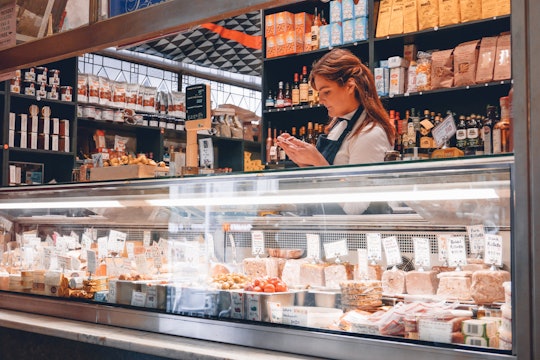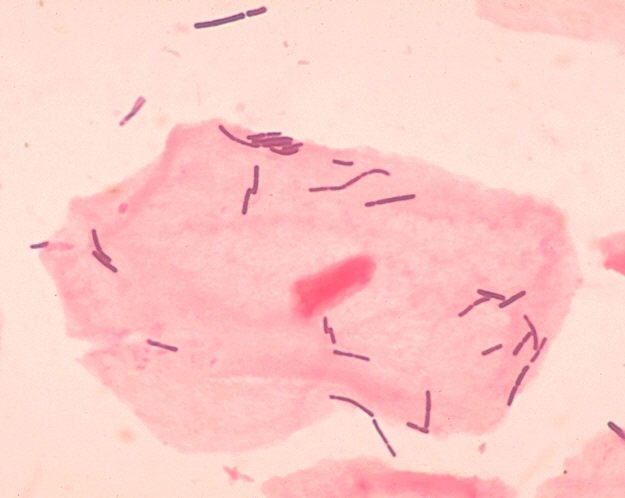
Photo by Anggun Tan on Unsplash
Sometimes they make food ferment, but used in the right way, these bacteria can also be a preservative
Lactic acid bacteria produce antibiotic-like compounds that kill off potentially harmful contaminants
You probably don't often think about lactic acid bacteria, but you eat them nearly every day. They're responsible for the distinctive taste of sauerkraut, salami, yogurt, and other fermented foods. The sour “fermented” taste arises as lactic acid bacteria (LAB) break down sugars like glucose and sucrose into lactic acid. Since prehistory, LAB have been used for different fermentation processes. Not only do we get new and unique flavors from it, but the microbes act as a bio-preservative to keep food fresh.
Scientists long thought that this phenomenon was tied to the production of lactic acid, as the compound lowered the pH to where other microbes could not grow. This was a desirable quality for fermented foods that rely on the lactic acid for flavor, but what about ready-to-eat (RTE) sliced meats, which are not meant to taste sour?
Your sliced deli ham and salami can contain harmful bacteria like Listeria monocytogenes, even after preventative methods like sodium nitrites and high pressure processing have been applied. The European Union found that as high as 3% of randomly selected RTE meat products (an assortment of beef, pork, turkey, and broiler) contained L. monocytogenes in 2017. And in January of this year, the CDC put out a food safety alert for pork products contaminated with Listeria from Long Phung Food Products.
Clearly, we need more measures against food-borne pathogens to guarantee food safety: are LAB the answer? Could they be used to preserve RTE meats without creating that “fermented” flavor?

Protective cultures are designed to be “biostatic,” meaning that they should prevent the growth of other bacteria, but not kill them, at the concentrations that they are used. The cultures also should not affect the “sensory” properties, such as color, texture, and, most importantly, taste, of the food products they are applied to. Chr. Hansen, a Danish biotech company, has cultivated specific strains of LAB (Lactobacillus curvatus and Lactobacillus sakei) and demonstrated that under refrigerated conditions, Listeria did not grow in vacuum-sealed RTE meat products when Lactobacillus was also present. The company filed a patent for the use of these strains of LAB as a food preservativein 2008.
Now, over ten years later, researchers at Shangdong University’s Lab of Beef Processing and Control wanted to see how the product stood the test of time. Focusing on locally obtained, vacuum-sealed Chinese beef, Yimin Zhang and her colleagues have evaluated how well Chr. Hansen’s SafePro® protective culture protected their meat.
Zhang's team monitored microbe activity over a 38-day period after applying the product to freshly-butchered meat. First, they treated the meat with either the protective L. sakei or L. curvatus strains, keeping some untreated for comparison later. They found that the protective cultures had the desired bacteriostatic effect not only on Listeria, but also on other food spoilage species like E. coli, Salmonella, and related bacteria. Their paper also documented the dynamics of the microbial community during storage of the vacuum-sealed beef, illustrating how early certain food-borne pathogens colonized the meat before their growth was stopped. Most importantly, the protective Lactobacillus strains caused no difference in color or freshness, and minimal difference in pH — though I did wonder about the taste.
How does LAB create bacteriostatic growth inhibition? At first, scientists thought it only had to do with the production of organic acids (things like the lactic acid found in milk and acetic acid, like in vinegar) lowering the pH. But the present study, like others, showed that inoculation of a product with LAB does not guarantee a significant drop in it's pH; over the 38 days of the experiment, the pH of the meat samples dropped from 5.5 to 5.3, a small change.
A more likely answer is the bacteriostatic peptides that the SafePro® strains produce, called bacteriocins. These molecules create holes in bacterial membranes very quickly, stopping potentially harmful bacteria in their tracks – and the bacteriocins themselves degrade just as quickly. Importantly, bacteriocins are also colorless, odorless, and tasteless, making them ideal as invisible protections in food.
A large concern, however, is the potential for bacteriocin resistance. Since bacteriocins function in antibiotic-like ways, it stands to reason that exposed bacteria, if some survive, could develop resistance mechanisms. Some strains of Listeria already have. However, the resistant pathogens were found to have severe reduction in growth that scientists link to an increased energy expenditure to develop that resistance, meaning that the mutation to counteract the killing compound hobbled the bacterium (in the same that a deer's giant antlers are good for fighting but also get tangled in tree branches). This is just one instance though, and the potential resistance mechanisms that foodborne pathogens could develop remains a grave concern as we look for alternative bacterial-control measures beyond antibiotics. In addition to biochemical means, another possible bacteriostatic effect could derive from gene regulation. Recently, researchers in Italy showed that other LAB strains have been shown to make the bacterium Staphylococcus aureus (which can cause dangerous staph infections) less infectious.
Overall, the bio-preservative future of lactic acid bacteria looks promising. Companies like Chr. Hansen in Denmark and Sacco System in Italy are already genetically modifying and cultivating LAB strains to seamlessly slip into cheeses, RTE meats, and more. But in places with the highest meat consumption, like the US, work still needs to be done to bring these tools to market.





What a creative method of food sterilization! I love that they challenged an old dogma as to why the presence of these Lactobacilli acted as a preservative. Thanks for sharing, Lauren!
I have two questions: